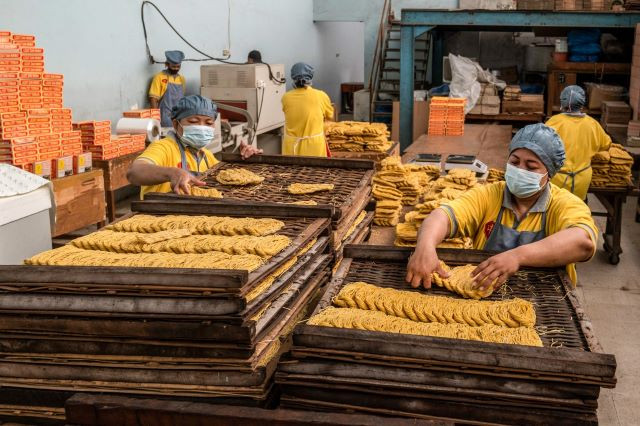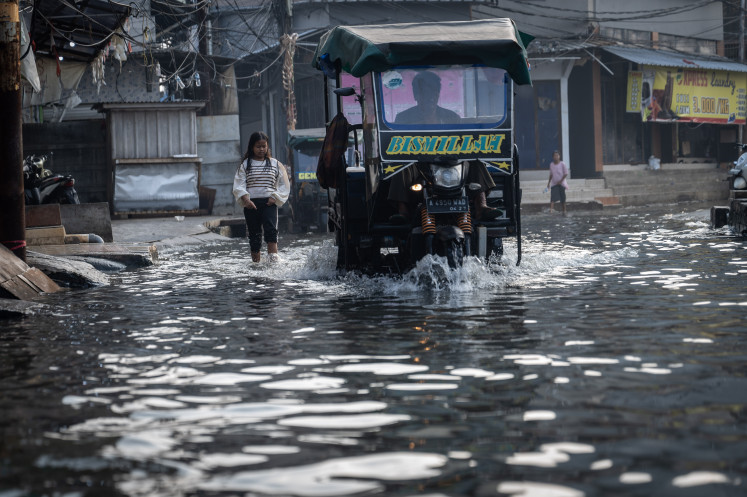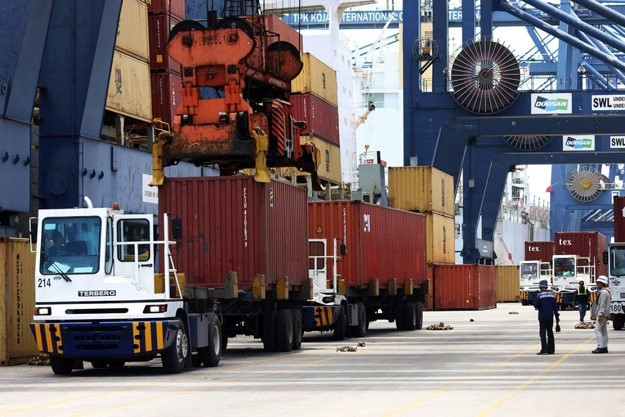Popular Reads
Top Results
Can't find what you're looking for?
View all search resultsPopular Reads
Top Results
Can't find what you're looking for?
View all search resultsIndonesia: Asia's growing energy market
Formerly the only Asian member of the Organization of the Petroleum Exporting Countries (OPEC), and one that is still among Asiaâs largest exporters of fossil fuels, Indonesia has become a significant importer of energy amid the regionâs large energy market
Change text size
Gift Premium Articles
to Anyone

F
ormerly the only Asian member of the Organization of the Petroleum Exporting Countries (OPEC), and one that is still among Asia's largest exporters of fossil fuels, Indonesia has become a significant importer of energy amid the region's large energy market.
Steady economic growth and increasing energy demand, combined with a decline in domestic oil production have led Indonesia to become a major energy importer and a net oil importer since 2006, which forced it to quit OPEC in 2008.
Indonesia's consumption of gasoline has been increasing quite fast (by more than 10 percent per annum in recent years), driven mostly by a high growth in car and motorcycle ownership, as well as the government's tremendous fuel subsidies.
It is predicted that before 2020, Indonesia will become the world's largest importer of gasoline. By that time, our gasoline deficit will be around 450,000 barrels per day (bpd), from the current 350,000 bpd.
The increase in our gasoline deficit will surely influence regional energy markets. For many years, we have imported gasoline and other oil products from Singapore, the hub for regional refineries.
As the government's plan of increasing the country's refinery capacity will be difficult to realize in the near future (with refinery capacity stuck at about 1.15 million bpd), we will see our gasoline imports from regional refineries also increase.
With oil production steadily declining, the country will have to increase imports of crude oil to feed its domestic refineries. With domestic production at only around 850,000 bpd, crude oil imports have exceeded 400,000 bpd in recent years.
Another energy commodity that depends increasingly on imports is liquefied petroleum gas (LPG). In response to the severe oil-price hike in 2005-2006, the government adopted a policy to substitute kerosene ' which was used heavily in households for cooking ' with LPG.
The program was quite successful in terms of the amount of kerosene replaced. However, Indonesia's production capacity of LPG is not that great.
As domestic LPG production is limited ' coming mostly from oil refineries and the Badak LNG plant, which accounts for about 2.5 million tons per annum (MTPA) ' and demand for LPG has increased to 5.3 MTPA, Indonesia has to import the rest from international markets. So far, most of the imports are coming from Saudi Arabia (Aramco).
Manufacturing, power plants and other industries in Indonesia have long complained about not having natural gas supplied to them. There are significant geographical mismatches in the country's gas supply and demand: Large gas reserves are found in places far from the greatest demand, in Java and Sumatra.
Having fairly large gas reserves, Indonesia has so far developed its natural gas industry and become one of the world's largest producers of liquefied natural gas (LNG). However, all of the LNG produced is directed for export; this is not about to change anytime soon, given the limited availability of infrastructure.
A floating storage and regasification unit (FSRU), located offshore to the north of Jakarta, has enabled power plants around Jakarta to import LNG ' albeit currently only from the Badak plant.
Another FSRU is being built in Lampung province in Sumatra. In addition, a regasification unit is also being built in Aceh (the former Arun LNG plant), complete with a pipeline that will send the gas to North Sumatra.
When the construction of the new FSRU is completed, it will open Indonesia's imports for natural gas and LNG from domestic as well as international sources.
With regard to coal, as long as the country no longer increases its thermal coal exports, the reserves will be enough to feed power plants for the next one to two decades.
Our increasing dependency on energy imports, which makes us a large energy market in Asia for international suppliers, will surely reduce our energy security.
Indonesia will be able to reduce imports ' decreasing our energy security ' by implementing several strategic steps.
First, we should improve the investment climate so that our reserves and production of fossil fuels, oil in particular, will increase and expand domestic oil refining capacity.
Second, we need to develop gas infrastructure so that our large reserves of natural gas ' including those in remote areas ' can easily be connected to the centers of demand, which are mostly located in Java and major cities nationwide.
Indonesia's primary energy mix is still largely dependent on fossil fuels; oil share is still around 48 percent, coal 25 percent and natural gas 20 percent. The share of renewable energy is still very low.
Third, we need to accelerate development of our renewable energy potentials ' geothermal and hydropower in particular. These two sources could be developed to add to the capacity of our electricity generation.
The combined hydropower and geothermal capacity in our power generation mix is still only around 17 percent (12 percent for hydropower and 5 percent for geothermal), which represents only 4 percent of the entire hydropower and geothermal potential.
Part of our large crude palm oil (CPO) potential could also be developed to produce biodiesel, which could be blended with fossil-based oil to feed engines used in transportation, industry and power generation.
Indonesia has so far developed its natural gas industry and become one of the world's largest producers of LNG.
______________
The writer is senior energy planner with the National Development Planning Board (Bappenas). The views expressed here are personal.









